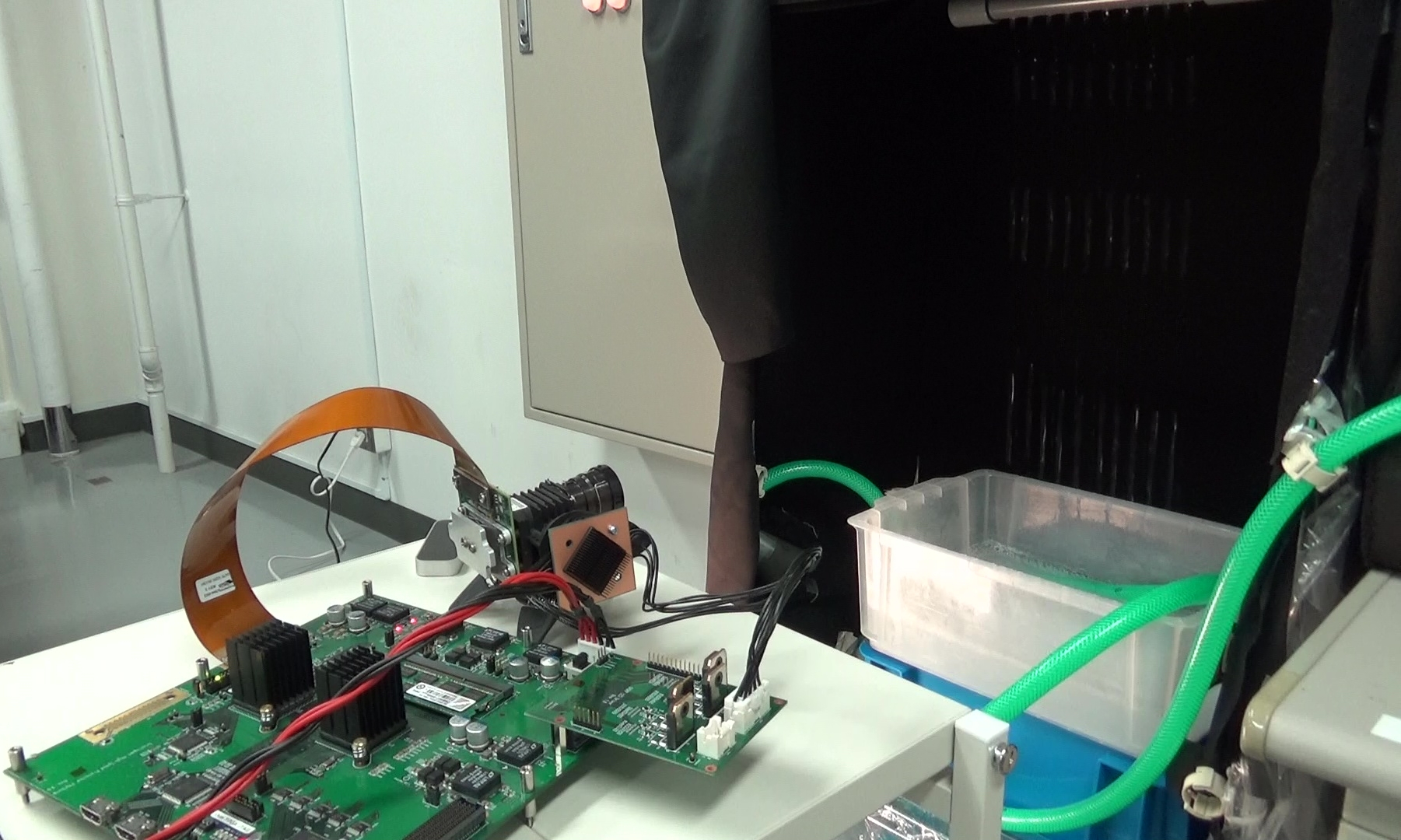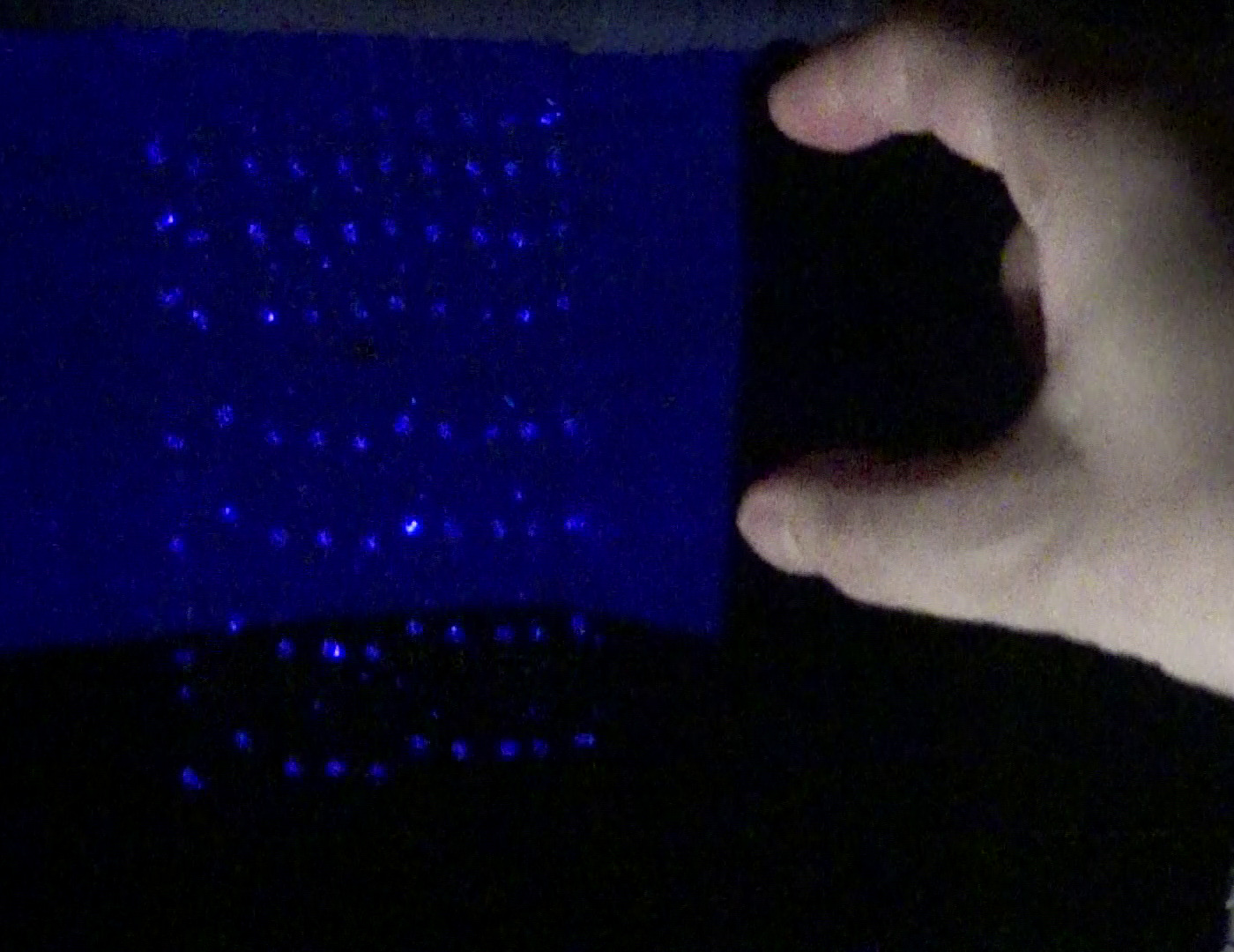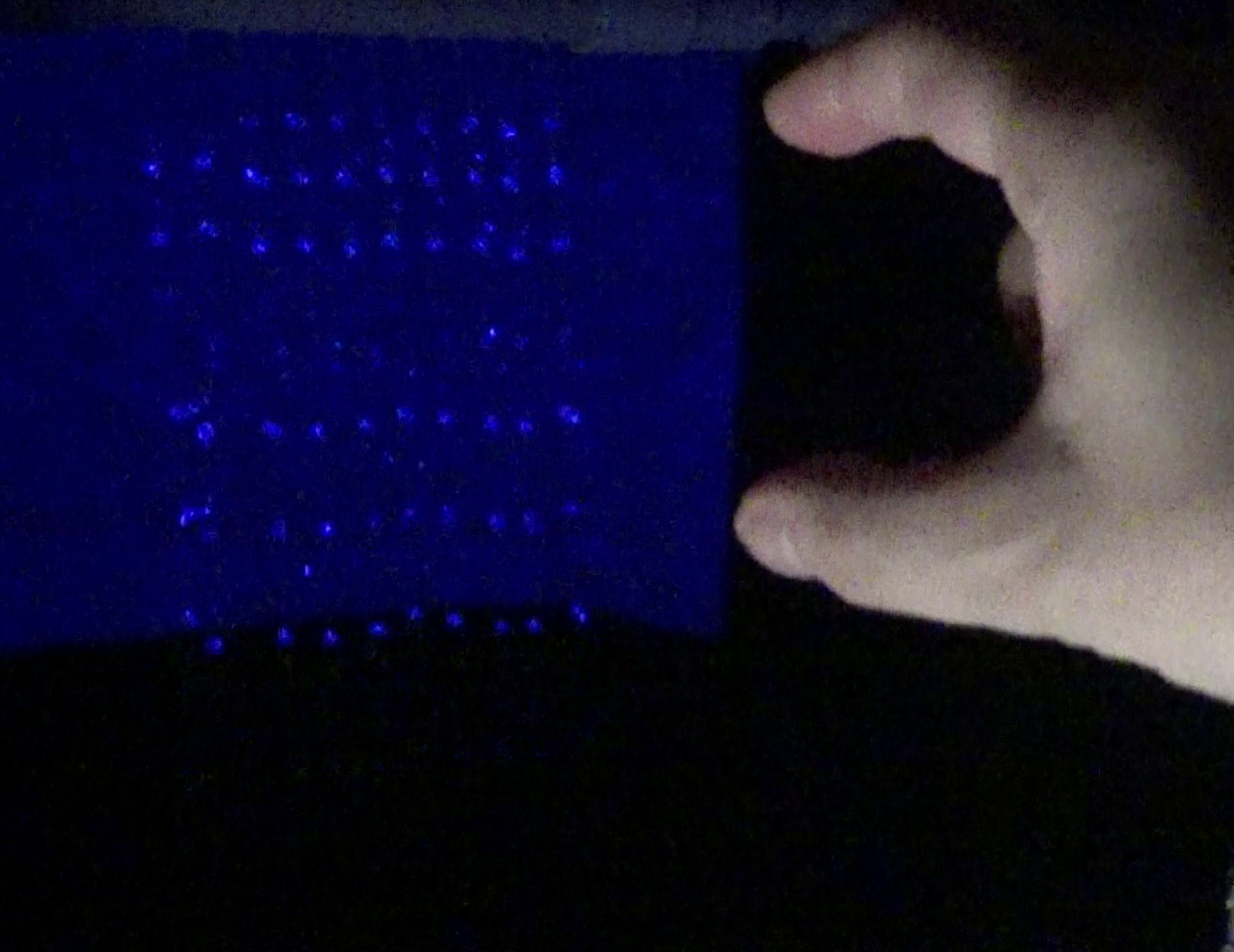“Puppeteered Rain: Interactive Illusion of Levitating Water Drops by Position-Dependent Strobe Projection” by Kagami, Higuchi and Hashimoto
Conference:
Type(s):
Entry Number: 48
Title:
- Puppeteered Rain: Interactive Illusion of Levitating Water Drops by Position-Dependent Strobe Projection
Presenter(s)/Author(s):
Abstract:
INTRODUCTION
Light projection onto falling water produces a distinct and impressive experience which is suitable for entertainment and advertising installations in public spaces [Barnum et al. 2010; Eitoku et al. 2006]. One of popular and classical techniques used in illuminating water for such purposes is strobe lighting, which presents optical illusion of levitating — or slowly falling or rising — water drops depending on the relation between water dropping and strobe lighting frequencies (e.g. [Pevnick 1981; Rosenthal 1984]). The use of a single strobe light limits the capability of spatial control of drops. Consider the case that we have a horizontal 1D array of water drop emitters to produce a 2D wall of apparent water drops. To render different rise and fall motions of drops for different positions, we at least need to control water emitting frequencies for individual water drop emitters, which however is not sufficient to flexibly control the 2D pattern of the drop motions, because the apparent motions of the drops in a single vertical line is ruled by the operation of the corresponding single drop emitter.
Instead of using a single strobe light, we propose to use a high frame-rate projector such that light rays with slightly different strobe frequencies can be produced in a position-dependent manner. Even with a simple water emitter array controlled by a single valve, it is possible to individually control the rise and fall motion of each apparent drop in the water wall. In this paper, we describe a pilot implementation of such a system, in which a user can interact with the formation of the drop motions.
References:
- Peter C. Barnum, Srinivasa G. Narasimhan, and Takeo Kanade. 2010. A Multi-Layered Display with Water Drops. In SIGGRAPH 2010.
- Shin’ichiro Eitoku, Tomohiro Tanikawa, Yasuhiro Suzuki, Koichi Hirota, Toshio Iwai, and Michitaka Hirose. 2006. Display Composed of Water Drops for Filling Space with Materialized Virtual Three-dimensional Objects. In IEEE VR 2006.
- Shingo Kagami and Koichi Hashimoto. 2018. A Full-Color Single-Chip-DLP Projector with an Embedded 2400-fps Homography Warping Engine. In SIGGRAPH 2018 Emerging Technologies.
- Stephen H. Pevnick. 1981. Program Controllable Free Falling Water Drop Fountain. US Patent 4,294,406. (1981).
- Kenneth Rosenthal. 1984. Optical Illusion Beverage Dispensing Device. US Patent 4,426,021. (1984).
Keyword(s):
Additional Images:


Acknowledgements:
Part of this work was supported by JST ACCEL JPMJAC1601 and JSPS Grant-in-Aid 19H04146 and 16H06536.






